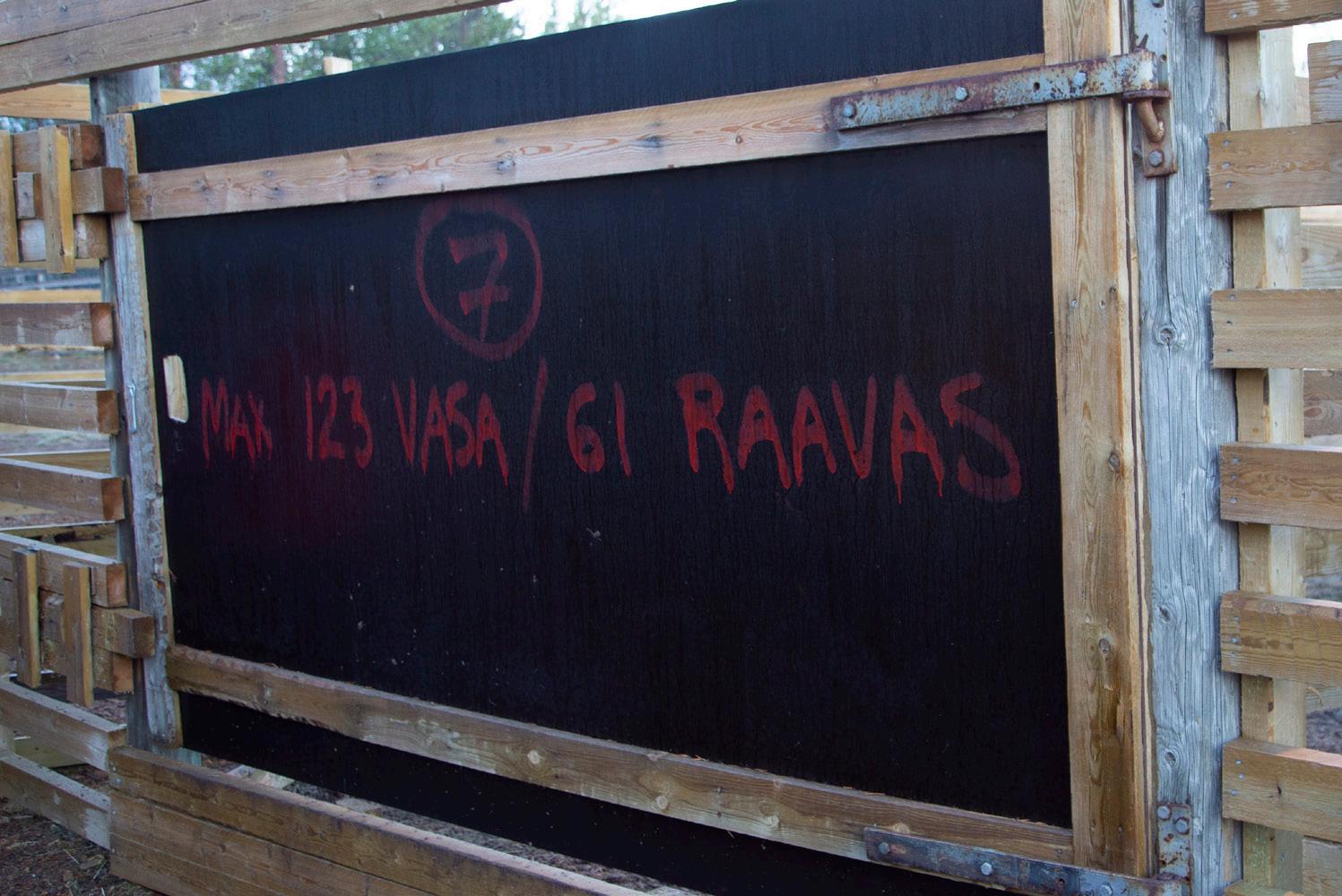
3 minute read
HANDLING OF LIVE ANIMALS AND SLAUGHTERHOUSE OUTDOOR AREAS
Transfer to the round-up corral, separation and transport to the slaughterhouse cause stress to reindeer. Stress and bruises (haematomas) weaken meat quality. Appropriate handling of animals before slaughtering is one of the cornerstones of high-quality operations. Only healthy reindeer are delivered to the slaughterhouse. Transporting sick reindeer to the slaughterhouse is only allowed with a permit from a veterinarian. Injured reindeer are slaughtered first, followed by calves and fully-grown reindeer come last.
The animals must be provided with a calm setting. A fence outlining the slaughterhouse area and a locked gate prevent outsiders, dogs, foxes, etc. from entering the slaughterhouse area. Sufficient rest and food at the holding pens help the animals to recover. It is recommended to keep calves and fully-grown reindeer in separate pens.
A familiar female among the calves may calm them down. Animals coming from different separation sites are to be placed in different pens in order to avoid excessive bruises and dominance fights between unfamiliar reindeer.
It is recommended to mark calves without an earmark with a metal slaughter tag instead of cutting earmarks. Especially in sub-zero temperatures, cutting ears is not recommended. Additional marking methods include paint intended for animal marking or a plastic tag, if there is doubt about the metal tag’s adherence to the ear. Also the collar used in calf marking may be left on the calf for it to be removed only at the slaughterhouse.
It is recommended to feed the animals upon their arrival to the slaughterhouse which allows them to calm down for eating and ruminating. Lichen, silage or dry hay do not fill up the rumen too much. According to the Animal Welfare Act, an animal shall be fed, if it has to wait for slaughter for over 12 hours. Water (or clean snow) must be available at all times. A thirsty reindeer may be up to one kilogramme lighter in terms of slaughter weight and its hide will be difficult to detach. Heated drinking cups are the best solution for giving water to the animals. The slaughterhouse pens must be safe for reindeer. They cannot have, for example, any nails sticking out or broken boards. There must be enough space for the animals, at least 1 m²/calf and 2 m²/fully-
grown reindeer. The maximum numbers of animals must be clearly marked on the pens.
Dividing the holding area to smaller sections and numbering them is a good practice, which makes it easier to unload the animals from vehicles and their inspection when alive.
The base of the holding pen impacts the cleanliness of the animals. Bark mulch, wood chips or macadam are the best base materials. The pen base must be cleaned or the surface material replaced annually. Cleaning is easier if the pen can be accessed with a tractor or skid-steer loader.
A noticeably ill, hurt or injured animal and suckling calves are to be slaughtered straight away, however, no later than within two hours following their arrival to the slaughterhouse or slaughter site. Before slaughtering, the above-mentioned animals must be kept separate from the other animals. (Animal Welfare Decree 1996/396)
“Animals which are unable to walk shall not be dragged to the place of slaughter, but shall be killed where they lie” (Regulation (EC) No 1099/2009 on the protection of animals at the time of killing, Annex 3, Article 1.11)
Picture 7. An example from the Vuomaselkä reindeer slaughterhouse on how to penspecifically mark the maximum number of reindeer and what constitutes a safe gate.

Picture 8. Wood chips is an ideal base material for outdoor pens. It is water-permeable and agreeable to reindeer. A heated water cup is the best solution to guarantee sufficient intake of water. Photograph from the Pudasjärvi slaughterhouse.

Picture 9. It is natural for reindeer to walk on an upward slope. In a narrow race it is difficult for reindeer to turn in the return direction.
28 • Karoliina Majuri & Kirsi Muuttoranta










